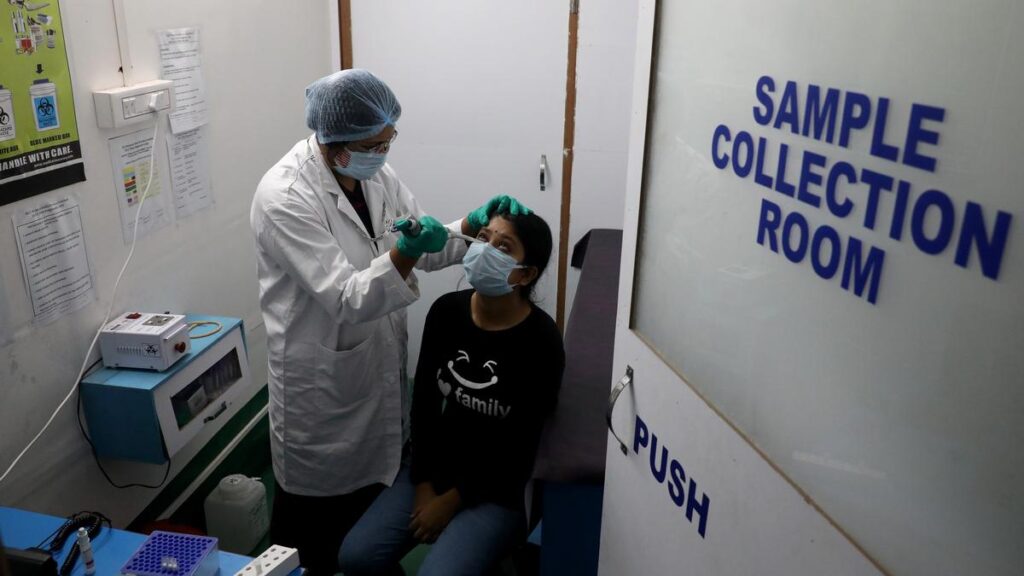Fungal infections (mycoses) are a growing public health concern in India, affecting various body parts and posing risks of drug resistance if not managed properly, especially in vulnerable populations.
The burden of serious fungal infections in India mostly includes mucormycosis — often called black fungus, aspergillosis — primarily affecting the lungs, but can also involve other organs, candidiasis — caused by an overgrowth of yeast, can manifest in various forms, including oral thrush, skin infections, and, in severe cases, systemic infections , and cryptococcosis — often affecting the lungs or brain.
According to a study in Open Forum Infectious Diseases, more than 57 million Indians, accounting for approximately 4.4% of the population, are affected by serious fungal diseases, with 10% of those involving potentially dangerous mold infections. Additionally, a recent report by World Health Organization (WHO) records gaps in antifungal diagnostics and treatment highlighting how unprepared countries like India are to tackle this crisis.

The growing threat of fungal infections in India
Neha Rastogi Panda, senior consultant, infectious diseases, Fortis Hospital, Gurugram, emphasises that fungal infections can manifest as mild, superficial conditions like ringworm or athlete’s foot, but also as severe, life-threatening systemic infections caused by fungi like Candida or Aspergillus.
Fungal infections often begin as minor irritations, commonly self-treated with over-the-counter creams and many of which contain steroids. Such misuse can mask symptoms, worsen infections, and build resistance. “A lot of people visit unqualified practitioners who prescribe steroid-based creams,” she says. “This not only worsens the infection but contributes to drug resistance.”
The COVID-19 pandemic magnified the fungal threat, with a surge in black fungus cases linked to widespread steroid use and compromised immunity. “Black fungus didn’t suddenly appear,” Dr. Panda stresses, “COVID just made it harder to ignore.”

Diagnostics: the critical missing link
One of the biggest challenges in tackling fungal infections is the lack of timely and accurate diagnosis. Fungal cultures takes time, unlike bacterial tests that yield results within 24–48 hours. Most labs test only for Candida albicans, ignoring the wide range of other fungal pathogens.
“Ninety percent of labs only test for Candida,” says Dr. Panda, “and advanced diagnostics like fungal PCRs (a molecular diagnostic technique that uses Polymerase Chain Reaction to detect and identify fungal DNA in clinical samples) and antigen tests are rare, expensive, and not accessible to many.”
Sangeeta Sharma, former director, National Institute of Tuberculosis & Respiratory Diseases (NITRD), shared similar concerns: “There are no convenient point-of-care fungal tests currently. Most fungal cultures can be handled safely in basic labs, but some, like Coccidioides, are more dangerous and require special high-security labs (BSL-3) as they can cause severe illness if inhaled, making them inaccessible in rural and low-income settings.”
Even where diagnostic tools like bronchoscopy, biopsies, PCR-based molecular testing, and antigen assays are available, they’re largely restricted to tertiary hospitals. “Implementation is the issue,” says Ishan Capoor, associate consultant pulmonologist, Narayana Health. “We have tools, but they aren’t used widely or efficiently, especially at primary care levels.”
Limited treatment options and rising drug resistance
India’s antifungal arsenal is alarmingly small, with only 10–12 drugs commonly available. Treatment must be organism- and site-specific, but incorrect prescriptions are frequent, leading to cross-resistance. “One antifungal does not fit all,” says Dr. Panda.
The rise of Candida auris, which is multi-drug resistant and has a mortality rate of nearly 50% in blood infections, is particularly concerning. Even last-resort drugs like amphotericin B are sometimes ineffective. Amphotericin B — though potent, has severe side effects and must be given intravenously — making it both costly and hard to administer. “We need more drug development in this space,” Dr. Sharma emphasises. The WHO report also emphaisis of a limited global pipeline of antifungal drugs, compounding the threat.
The environmental misuse of antifungal agents also plays a role. Antifungal drugs similar to those used in humans are added to animal feeds and used in agriculture, fostering quiet but severe antifungal resistance within the ecosystem.
Hidden vulnerabilities and co-infections
India’s high burden of diabetes, TB, HIV, and chronic respiratory diseases makes its population especially vulnerable to fungal infections. Dr. Capoor points out a vicious cycle: “Poorly controlled blood sugar worsens fungal infections, and infections themselves can disrupt sugar control.” Routine diabetes screening should be part of fungal infection protocols, he adds.
Fungal infections often mimic other conditions like TB or lung cancer, making diagnosis even trickier in a country where TB is endemic. “Especially aspergillosis and histoplasmosis — lung infections, can mimic pulmonary tuberculosis on CT chest imaging,” says Dr. Capoor. This often leads to misdiagnosis and inappropriate empirical TB treatment.
Additionally, co-infections with TB and fungi are increasingly reported, demanding concurrent and carefully monitored treatment regimens. “Drug interactions can complicate care,” he says, stressing the need for clinician awareness and vigilant monitoring.

Need for vigilance, awareness, and policy change for all groups
Dr. Sharma emphasises the importance of early diagnosis in children, noting that even if clinical trials cannot include them initially, proactive screening poses no harm. “Children are often a neglected group when it comes to diagnostics and drug trials,” she explains. “They’re typically included much later, by the time tests or treatments reach them, it’s often too late.”
“Superficial fungal infections should not be taken casually,” says Dr. Panda. “When we suspect more, we investigate more, and the system starts to strengthen.”
Hence, WHO report and experts, call for expanded diagnostic availability, accelerated treatment development, and accessible testing to combat this growing threat of fungal infections and antifungal resistance.
Published – April 06, 2025 06:20 pm IST

